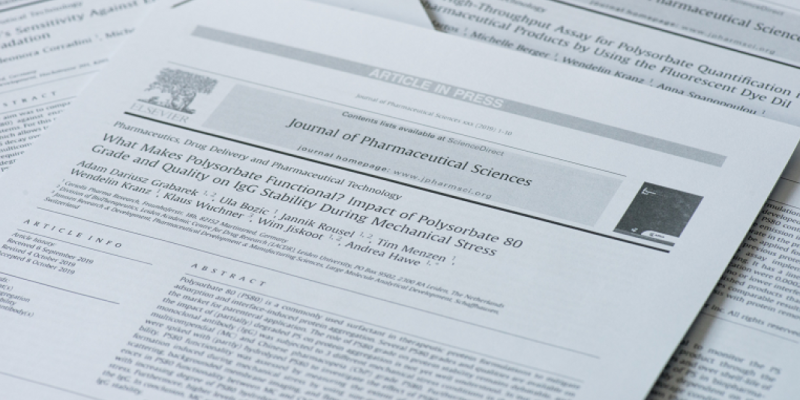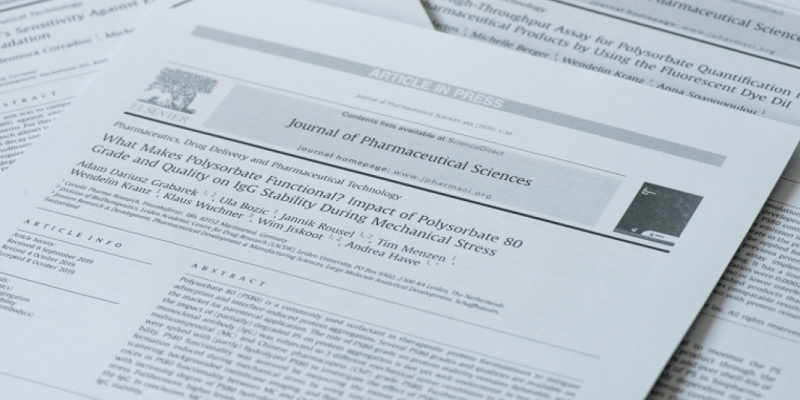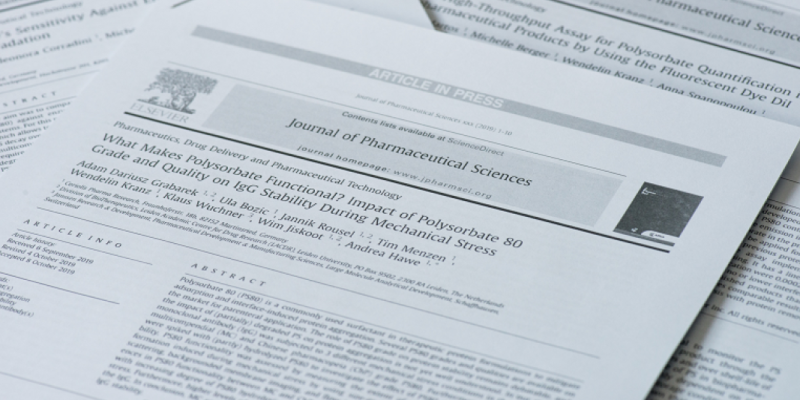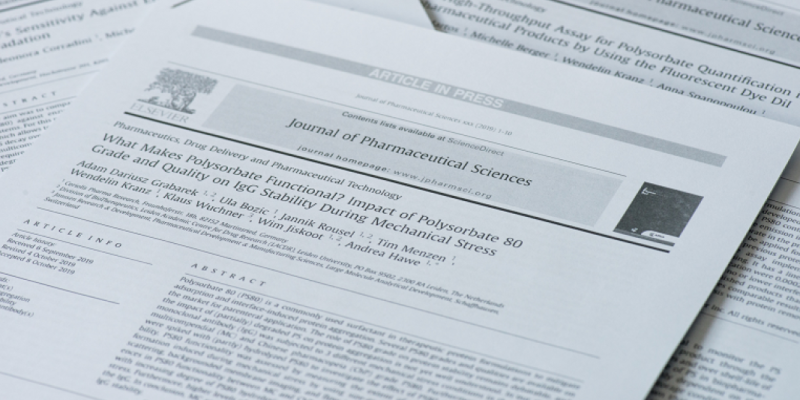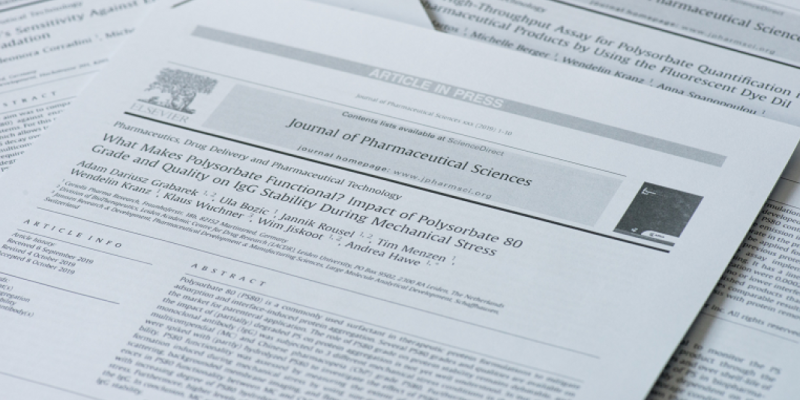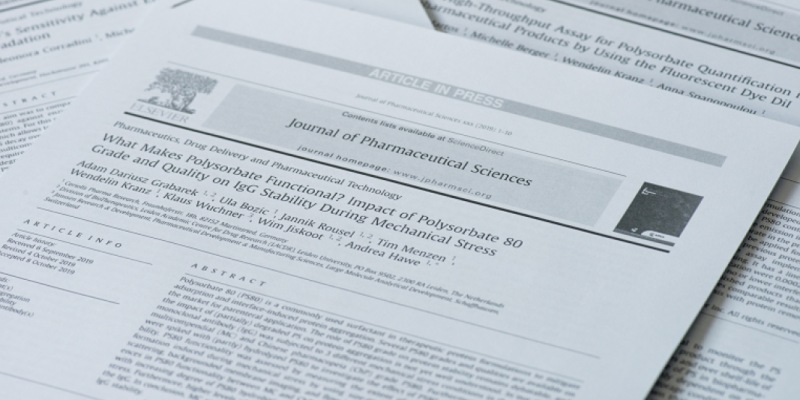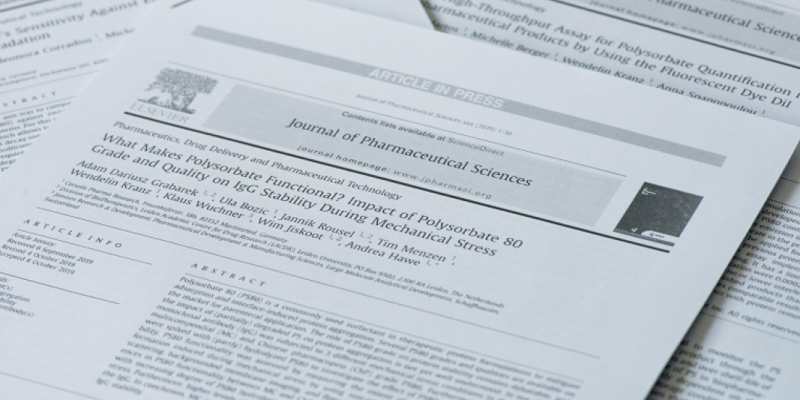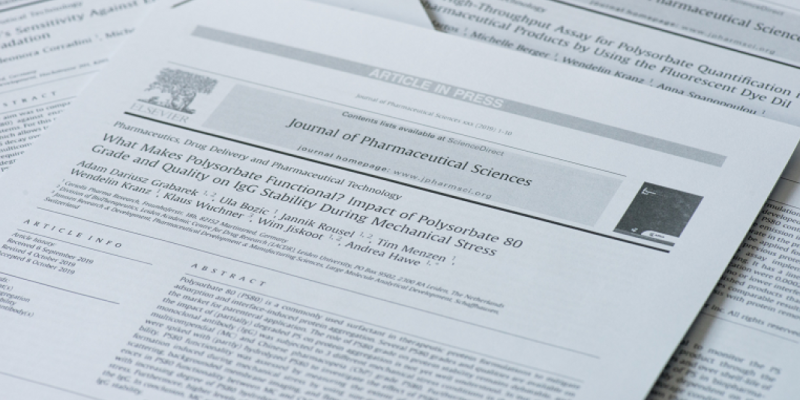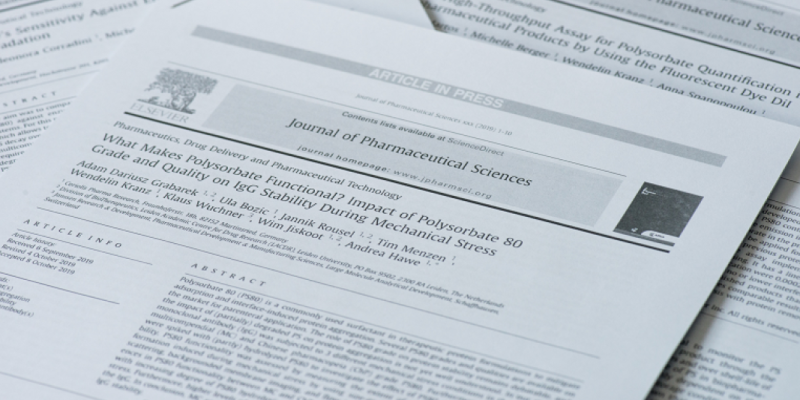Utility of three flow imaging microscopy instruments for image analysis in evaluating four types of subvisible particle in biopharmaceuticals
J Pharm Sci. 2022 Aug.
Utility of three flow imaging microscopy instruments for image analysis in evaluating four types of subvisible particle in biopharmaceuticals
Subvisible particles (SVPs) are a critical quality attribute of parenteral and ophthalmic products. United States Pharmacopeia recommends the characterizations of SVPs which are classified into intrinsic, extrinsic, and inherent particles. Flow imaging microscopy (FIM) is useful as an orthogonal method in both the quantification and classification of SVPs because FIM instruments provide particle images. In addition to the conventionally used FlowCam (Yokogawa Fluid Imaging Technologies) and Micro-Flow Imaging (Bio-Techne) instruments, the iSpect DIA-10 (Shimadzu) instrument has recently been released. The three instruments have similar detection principles but different optical settings and image processing, which may lead to different results of the quantification and classification of SVPs based on the information from particle images. The present study compares four types of SVP (protein aggregates, silicone oil droplets, and surrogates for solid free-fatty-acid particles, milled-lipid particles, and sprayed-lipid particles) to compare the results of size distributions and classification abilities obtained using morphological features and a deep-learning approach. Although the three FIM instruments were effective in classifying the four types of SVP through convolutional neural network analysis, there was no agreement on the size distribution for the same protein aggregate solution, suggesting that using the classifiers of the FIM instruments could result in different evaluations of SVPs in the field of biopharmaceuticals.
J Pharm Sci. 2022 Aug.


